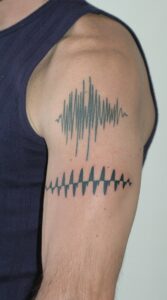Since David Kemp’s seminal article in 1978 on “Kemp’s echo”, otoacoustic emissions (OAEs) have been shown to be very useful clinically, despite the difficulty I have in spelling it correctly. Other than for infant hearing screenings OAEs appear to demonstrate hearing pathology long before an audiometric loss is found. That is, it takes a significant amount of cochlear damage to show up as a hearing loss on an audiogram. If our role as hearing health care professionals is to prevent hearing loss from noise and music, OAEs should be one of the routine tools in any clinical setting.
There are three main areas for using OAEs with musicians:
(1) hearing loss prevention counselling- a change in OAE measure from year to year (within an individual musician) will typically show up prior to a change in audiometry using pure tones.
(2) OAE can demonstrate an analog to TTS- strictly speaking these are not “threshold shifts” as we may see in audiometry, but there can be a temporary reduction in OAE values after a loud music gig. This can be useful to determine who or what instrument(s) are the main culprits in causing the overexposure (and there may not even be any measurable TTS).
(3) OAEs can demonstrate a reduction (similar to a TTS) at a non-audiometric frequency. A recent musician complained of a feeling of fullness after a loud gig. Audiometry was normal at 1000, 2000, 3000, 4000, 6000, and 8000 Hz. However, OAE testing indicated a reduction only at 5000 Hz. This was useful for counselling and allowed me to go back and assess the hearing threshold at 5000 Hz on my multi-frequency audiometer- and indeed there was a temporary reduction at 5000 Hz in acuity.
And oh yes, what is the one thing that you should not do with OAEs? Get a tattoo!… See picture below.








